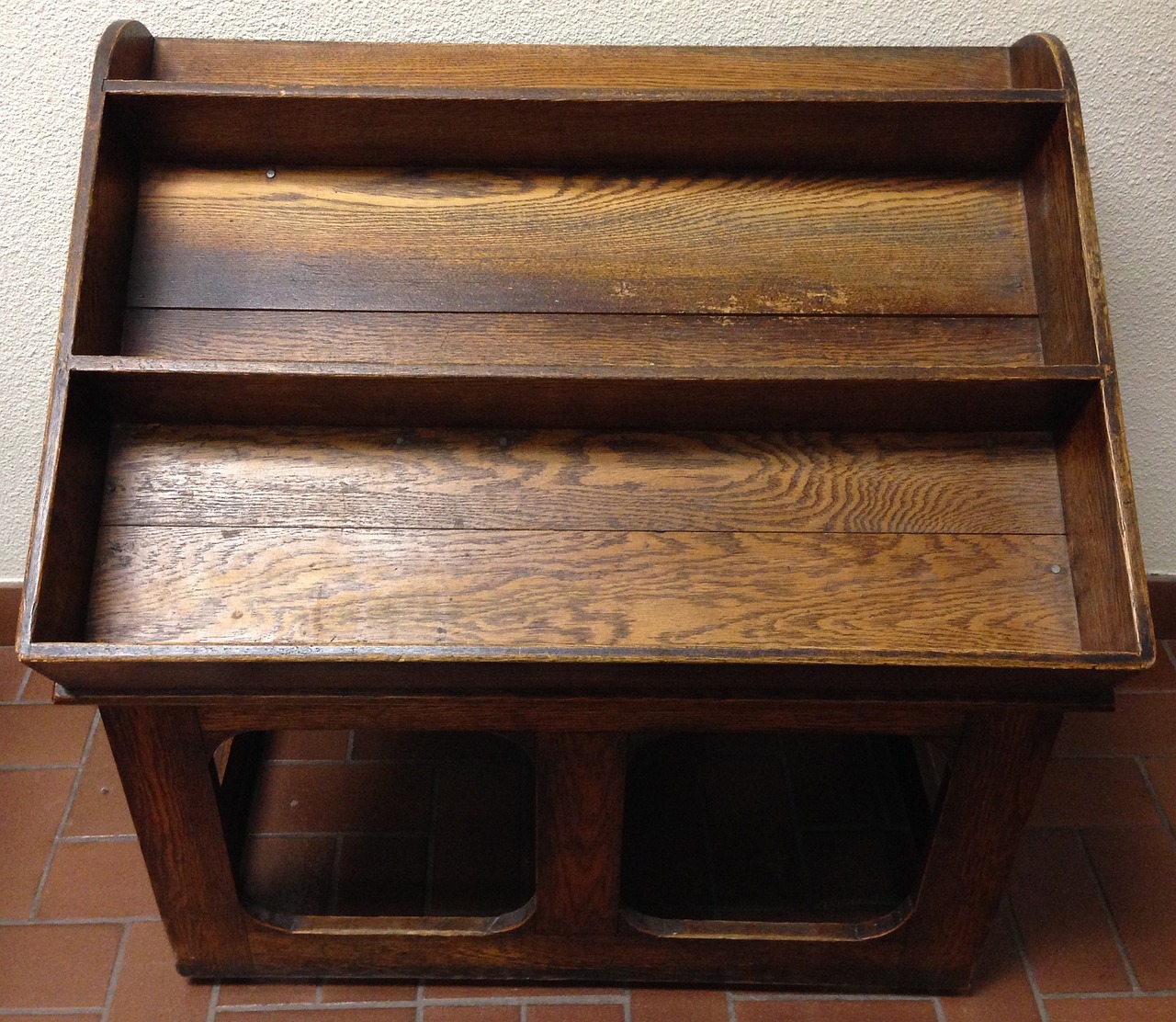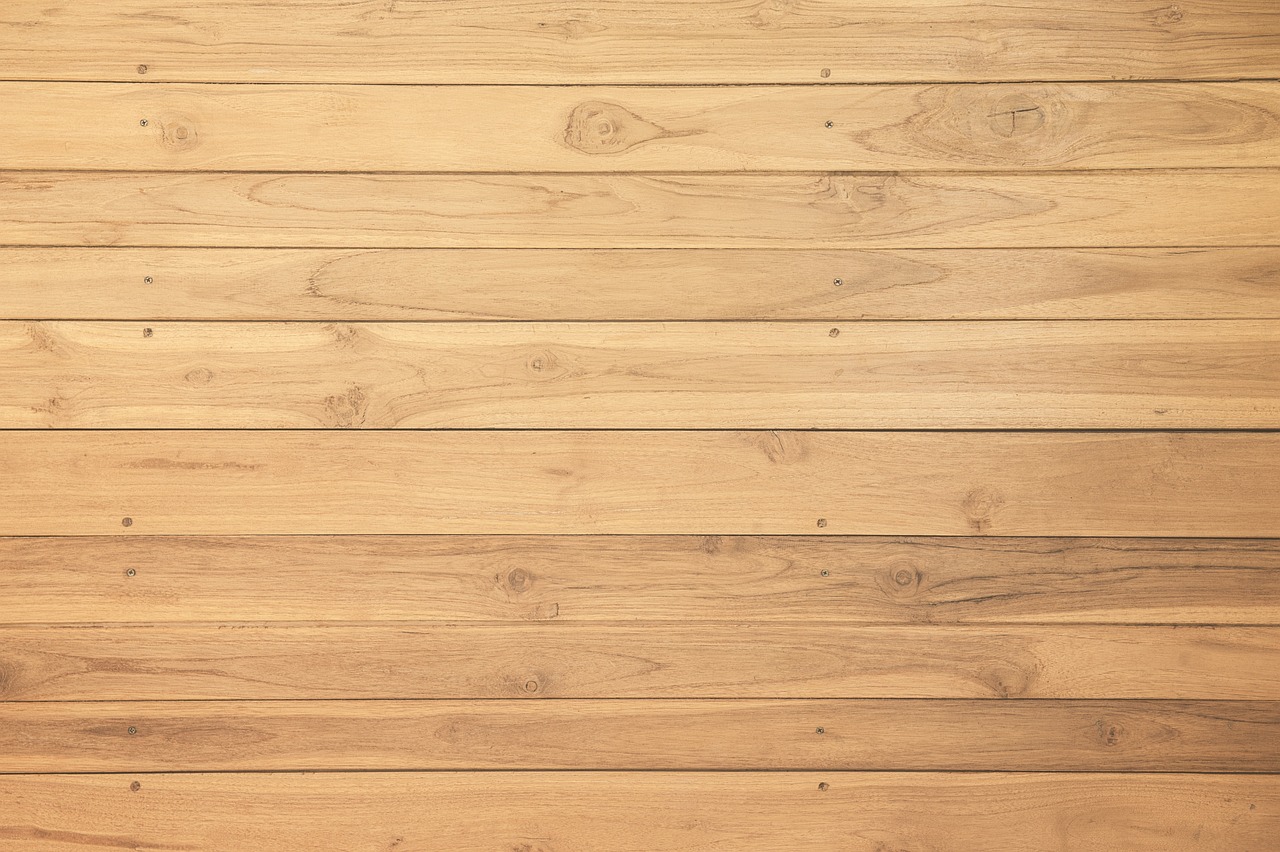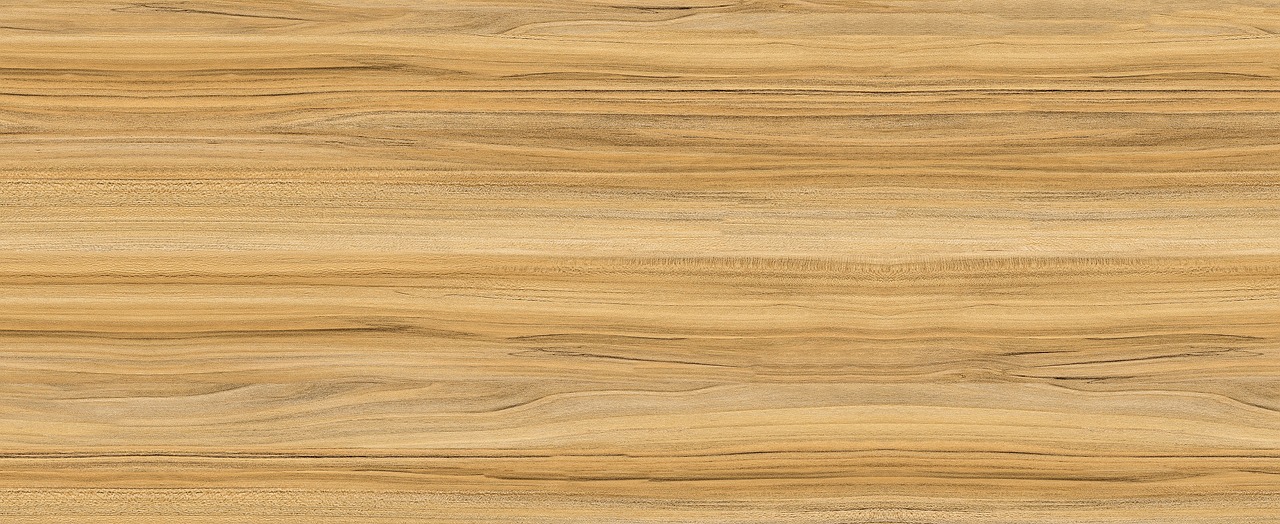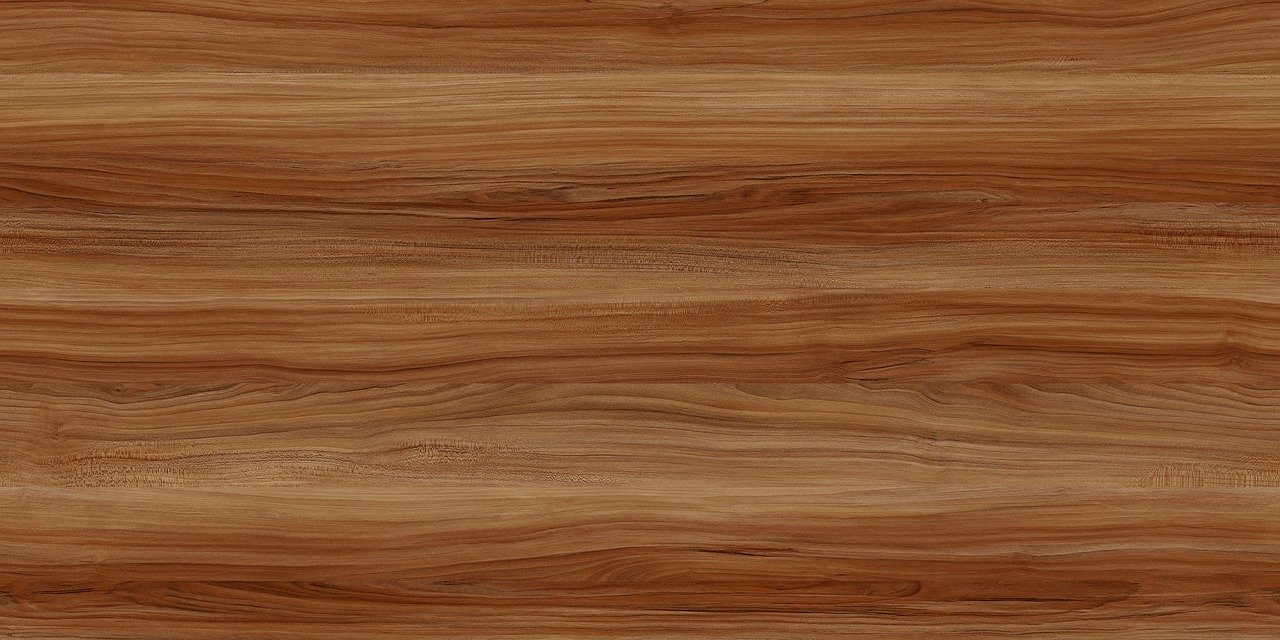Embracing Sustainability: Reclaimed Wood Project Ideas
In today's world, where environmental concerns are at the forefront of our minds, embracing sustainability has never been more crucial. One of the most innovative and exciting ways to contribute to a greener planet is through the use of reclaimed wood. This not only helps reduce waste but also adds a unique charm to your home or workspace. Imagine walking into a room and being greeted by the warm, rustic feel of wood that has a story to tell. Each piece carries a history, a character that new materials simply can’t replicate. So, let’s dive into some creative and practical ways to utilize reclaimed wood in various projects that not only look stunning but also promote sustainability.
Why should you consider using reclaimed wood? The benefits are numerous and compelling! First and foremost, reclaimed wood is an environmentally friendly choice. By repurposing wood from old buildings, barns, or even pallets, you are reducing the demand for new lumber, which in turn helps to conserve forests and biodiversity. Additionally, reclaimed wood often possesses a unique aesthetic that can’t be found in freshly cut timber. The weathered textures and rich patinas add a sense of history and warmth to any project. Furthermore, reclaimed wood is generally more durable than new wood, as it has already withstood the test of time. This durability means that your projects will not only look beautiful but will also last for years to come.
Transforming reclaimed wood into furniture is one of the most popular ways to incorporate this sustainable material into your home. From stunning dining tables to cozy chairs, these projects not only save resources but also create one-of-a-kind pieces that reflect your personal style. Imagine hosting a dinner party and having guests marvel at your handmade dining table, each knot and grain telling a story of its own. Let’s explore some specific furniture projects that can bring life to your space.
Crafting a dining table from reclaimed wood can add character to your dining area. Not only does it serve as a functional piece of furniture, but it also becomes a centerpiece for family gatherings and celebrations. When designing your table, consider the style you want to achieve. Are you leaning towards a rustic farmhouse look, or do you prefer something more modern? Here are some design inspirations:
There are various styles you can explore when it comes to dining tables made from reclaimed wood:
- Rustic: Emphasizing natural imperfections, this style embraces the raw beauty of reclaimed wood.
- Modern: Clean lines and minimalism can highlight the unique characteristics of the wood.
- Farmhouse: A blend of comfort and style, often featuring a large, sturdy table with a distressed finish.
Each design showcases the beauty of reclaimed wood while fitting different aesthetics, making it versatile for any home.
When it comes to building your own dining table, proper techniques are essential to ensure durability and longevity. Start by selecting the right pieces of wood; look for those that are free of rot and damage. Use wood glue and sturdy joinery methods, such as mortise and tenon or pocket screws, to ensure a solid construction. Sand the surfaces to achieve a smooth finish, and consider applying a protective sealant to enhance the wood's natural beauty and protect it from stains. With these tips in mind, you can create a dining table that will be cherished for years to come.
Reclaimed wood shelving units are not only functional but also add a stylish touch to any room. Whether you need extra storage in your kitchen or a display area for your favorite books and trinkets, these shelves can enhance your space while promoting sustainability. Think about the design: will you go for open shelving to showcase your items or closed cabinets for a cleaner look? The possibilities are endless!
Incorporating reclaimed wood into decorative accents can elevate your space in ways you might not expect. From unique wall art to charming picture frames, the creative potential is vast. Imagine a stunning piece of wall art that not only beautifies your home but also sparks conversations among your guests.
Creating wall art from reclaimed wood allows for personalized expression. You can use various techniques, such as painting, stenciling, or simply arranging different wood pieces into a cohesive design. The beauty of reclaimed wood is that it can adapt to any style, whether you want something modern and sleek or rustic and cozy.
Reclaimed wood picture frames add a rustic touch to your photographs. Not only do they enhance the visual appeal of your cherished memories, but they also serve as a reminder of your commitment to sustainability. Crafting unique frames can be a fun project, allowing you to customize the size and finish to match your décor perfectly.
As you embark on your journey with reclaimed wood, you might have some questions. Here are a few frequently asked questions that can help guide you:
- Where can I find reclaimed wood? You can source reclaimed wood from local salvage yards, architectural salvage stores, or even online marketplaces.
- Is reclaimed wood safe to use? Yes, as long as it has been properly treated and cleaned, reclaimed wood is safe for home use.
- How do I care for reclaimed wood furniture? Regular dusting and occasional polishing with a wood-safe product can keep your reclaimed wood looking beautiful.
In conclusion, embracing sustainability through reclaimed wood projects not only benefits the environment but also allows you to create stunning, unique pieces that reflect your personal style. So why not get started on your next project today?

Benefits of Reclaimed Wood
Reclaimed wood is more than just a trendy material; it’s a sustainable choice that brings a plethora of benefits to the table—literally! By choosing reclaimed wood, you’re not only making an environmentally conscious decision, but you’re also inviting a unique story into your home. Each piece of reclaimed wood has a history, a character that new wood simply cannot replicate. This is what makes it so appealing for various projects.
One of the most significant advantages of reclaimed wood is its positive impact on the environment. By reusing wood that has already been harvested, we reduce the demand for new timber, which helps to conserve forests and biodiversity. It’s like giving a second life to trees that have already served their purpose. Imagine the impact if we all chose reclaimed wood over new materials; we could significantly decrease deforestation rates!
Beyond environmental benefits, reclaimed wood is known for its unique aesthetics. Unlike conventional lumber, reclaimed wood often features beautiful imperfections, like knots, nail holes, and varying grain patterns, which add character and warmth to any space. Whether you’re going for a rustic cabin vibe or a sleek modern look, reclaimed wood can fit right in. Plus, it’s a fantastic conversation starter—guests will be intrigued by the history behind your furniture or décor.
Another compelling reason to opt for reclaimed wood is its durability. Many reclaimed wood pieces come from old barns, factories, or warehouses, meaning they were once part of structures built to last. This wood has weathered the elements and has proven its strength over time. When you invest in reclaimed wood furniture or accents, you’re not just buying a product; you’re acquiring a durable piece that can withstand years of use while maintaining its charm.
To sum it up, here are some key benefits of using reclaimed wood:
- Environmental Impact: Reduces deforestation and conserves resources.
- Unique Aesthetics: Each piece has its own story and character.
- Durability: Often more robust than new wood due to its age and treatment.
Incorporating reclaimed wood into your projects not only enhances your space but also aligns with a more sustainable lifestyle. It’s a win-win situation—your home looks great, and you’re doing your part to protect the planet. So, why not consider reclaimed wood for your next DIY project? You’ll be surprised at how much charm and character it can bring!

Furniture Projects
Transforming reclaimed wood into furniture is not just a sustainable choice; it's a way to infuse your home with unique character and a story. Each piece of reclaimed wood carries its own history, making every project a chance to create something truly special. Imagine crafting a beautiful dining table or a cozy bookshelf that not only serves a purpose but also sparks conversations about its origin. These projects not only save valuable resources but also allow you to showcase your creativity and craftsmanship.
When it comes to furniture projects, the possibilities are endless. You can create various items ranging from tables to chairs, benches, and even storage solutions. The beauty of working with reclaimed wood lies in its versatility. Whether you prefer a rustic, modern, or farmhouse style, reclaimed wood can adapt to any design aesthetic. For instance, a weathered barn door can be transformed into a stunning coffee table, while old pallets can serve as the foundation for a chic outdoor seating area.
One of the most popular projects is crafting a dining table from reclaimed wood. This not only adds a touch of warmth to your dining area but also serves as a focal point that draws people together. Imagine hosting family dinners or gatherings with friends around a table that tells a story of its past life. To get started, you'll want to consider the size and shape of your table, as well as the overall design. Do you want a long rectangular table for large gatherings, or a round table for more intimate settings? The choice is yours!
When thinking about design inspirations for your dining table, consider exploring various styles that highlight the beauty of reclaimed wood:
- Rustic: Embrace the natural imperfections of the wood, showcasing its grain and knots.
- Modern: Combine reclaimed wood with sleek metal legs for a contemporary look.
- Farmhouse: Opt for a distressed finish, paired with white-washed chairs for that classic farmhouse feel.
Each of these styles can be tailored to fit your personal taste, making your reclaimed wood project a true reflection of your style.
Building a sturdy dining table from reclaimed wood requires some essential construction tips to ensure durability and longevity. First, make sure to select high-quality wood that is free from rot or significant damage. Preparation is key; take the time to sand the wood properly to avoid splinters and to enhance its natural beauty. When assembling the table, consider using dowels or pocket holes for a cleaner look and stronger joints. Don't forget to finish your table with a protective sealant to keep it looking gorgeous for years to come!
In addition to dining tables, reclaimed wood can be transformed into stunning shelving units that add both functionality and style to your space. From open shelving to closed cabinets, the charm of reclaimed wood can elevate any room. Imagine displaying your favorite books or plants on shelves made from beautifully aged wood, creating a warm and inviting atmosphere.
Ultimately, furniture projects using reclaimed wood are more than just DIY tasks; they are opportunities to express your creativity, contribute to sustainability, and create lasting memories in your home. So, roll up your sleeves, gather your materials, and let your imagination run wild!
Q: What types of reclaimed wood are best for furniture projects?
A: Hardwoods like oak, maple, and cherry are excellent choices due to their durability and aesthetic appeal. Softwoods like pine can also be used for lighter furniture pieces.
Q: How do I ensure the reclaimed wood is safe to use?
A: Always inspect the wood for signs of mold, pests, or rot. It's also wise to clean and treat the wood before use to eliminate any potential contaminants.
Q: Can I mix reclaimed wood with new materials?
A: Absolutely! Mixing reclaimed wood with new materials like metal or glass can create a stunning contrast and modern look.

Dining Tables
Crafting a dining table from reclaimed wood is not just about creating a piece of furniture; it's about weaving a story into your home. Each plank carries a history, a unique character that can transform your dining area into a warm, inviting space. Imagine gathering your family and friends around a table that not only serves meals but also sparks conversations about its past. The beauty of reclaimed wood lies in its imperfections—knots, varying colors, and textures that tell tales of its previous life. These elements make each table a one-of-a-kind masterpiece.
When it comes to design ideas, the possibilities are endless. You can opt for a rustic farmhouse style that embraces the natural grain and flaws of the wood, or you can go for a more modern approach with clean lines and a polished finish. Consider incorporating mixed materials, such as metal legs or glass tops, to create a stunning contrast that highlights the wood's organic beauty. Here are a few design inspirations to get your creative juices flowing:
- Rustic Farmhouse: Emphasize natural finishes and a weathered look.
- Modern Minimalist: Focus on sleek lines and a smooth finish.
- Industrial Chic: Combine reclaimed wood with metal elements for an edgy vibe.
Building your own dining table can seem daunting, but with the right construction tips, you can create a sturdy and beautiful piece. Start by selecting high-quality reclaimed wood; inspect each plank for structural integrity and suitability. When cutting the wood, ensure precise measurements to avoid any mishaps during assembly. Using strong joints, such as mortise and tenon or pocket holes, will enhance the table's durability. Don't forget to sand the surface well to prevent splinters and finish it with a protective sealant to maintain its beauty for years to come.
Incorporating reclaimed wood into your dining table project not only champions sustainability but also adds a personal touch to your home. Every meal shared around this table becomes a cherished memory, and every scratch or mark tells a story. So roll up your sleeves, gather your materials, and let your creativity shine as you embark on this rewarding journey of building your own dining table.

Design Inspirations
When it comes to designing a dining table from reclaimed wood, the possibilities are as vast as the imagination. The beauty of reclaimed wood lies not just in its sustainability, but in its unique characteristics that tell a story of its past. Whether you're aiming for a rustic charm, a sleek modern vibe, or a cozy farmhouse feel, there are design inspirations that can guide your creative process. Each style brings its own flair, allowing you to create a piece that doesn’t just serve a function but also becomes a conversation starter.
For a rustic design, think about using wood with visible knots and imperfections. These features add character and warmth to the table, making it feel inviting and lived-in. Pairing this with mismatched chairs can enhance the rustic aesthetic, creating a relaxed atmosphere perfect for family gatherings or casual dinners with friends.
If you're leaning towards a modern style, consider a minimalist approach. A reclaimed wood dining table with clean lines and a polished finish can create a striking contrast against a contemporary setting. You can incorporate metal accents, such as steel legs or brackets, to add a touch of industrial chic. This juxtaposition not only highlights the beauty of the wood but also brings a fresh and modern twist to your dining area.
For those who adore the farmhouse style, a reclaimed wood table can be the centerpiece of your home. Think about a large, sturdy table with a distressed finish, complemented by a set of comfortable, upholstered chairs. Adding elements like a centerpiece of wildflowers in a mason jar or vintage tableware can enhance the farmhouse vibe, making every meal feel like a special occasion.
Here are a few additional design elements to consider when crafting your reclaimed wood dining table:
- Color Palette: Choose colors that complement the natural tones of the wood. Earthy tones like greens, browns, and creams work beautifully.
- Table Shape: Rectangular tables are traditional, but round or oval shapes can create a more intimate setting.
- Finishing Touches: Consider adding a protective finish that enhances the wood's natural beauty while ensuring durability.
Ultimately, the design of your reclaimed wood dining table should reflect your personal style and the atmosphere you wish to create in your home. By embracing these inspirations, you can craft a stunning centerpiece that not only serves a functional purpose but also embodies the spirit of sustainability and creativity.

Construction Tips
When it comes to building a dining table from reclaimed wood, there are a few crucial that can make all the difference between a project that lasts for years and one that falls apart after a few uses. First and foremost, always start by selecting the right type of reclaimed wood. Look for wood that is not only visually appealing but also structurally sound. The beauty of reclaimed wood lies in its history, but it’s essential to ensure that it’s free from rot, pests, or any significant damage.
Next, consider the design and dimensions of your table. Will it be a small, intimate table for two or a large gathering space for family and friends? Sketching out your design on paper can help you visualize the final product and determine how much wood you will need. Remember, reclaimed wood often comes in various sizes and shapes, which can add a unique charm to your table but may also require some creative thinking when planning your cuts.
Once you have your wood selected and your design planned, it’s time to prepare the wood. This step is vital. You'll want to sand the surfaces to remove any rough spots or splinters, ensuring a smooth finish. This not only enhances the aesthetic appeal but also makes the table safer for everyday use. Don’t skip this step, as a well-prepared surface is key to a successful finish.
After sanding, you’ll need to join the pieces together. Using a strong wood glue along with screws or dowels is a great way to achieve a sturdy construction. For added durability, consider using pocket hole joinery, which allows for a clean look and strong bond. Remember, the goal is to build a table that can withstand the test of time and the inevitable wear and tear of daily life.
Finally, finishing touches can truly elevate your reclaimed wood dining table. Applying a protective finish, such as polyurethane, not only enhances the wood’s natural beauty but also protects it from spills and scratches. You might also consider staining the wood to bring out its unique grain patterns, or leaving it natural for a more rustic look. Whatever finish you choose, make sure to follow the manufacturer’s instructions for the best results.
In summary, crafting a dining table from reclaimed wood is a rewarding project that allows you to combine creativity with sustainability. By paying attention to the selection of wood, planning your design, preparing the surfaces, joining the pieces securely, and applying a protective finish, you can create a stunning centerpiece for your home that tells a story and supports eco-friendly practices.
- What types of reclaimed wood are best for furniture?
Hardwoods like oak, maple, and walnut are excellent choices due to their durability and aesthetic appeal.
- How do I know if the reclaimed wood is safe to use?
Inspect the wood for signs of rot, pests, or extensive damage. If in doubt, consult with a professional.
- Can I use reclaimed wood for outdoor furniture?
Yes, but make sure to treat it with a suitable outdoor finish to protect it from the elements.
- Is reclaimed wood more expensive than new wood?
It can be, but the unique character and sustainability benefits often justify the cost.

Shelving Units
When it comes to maximizing space and adding a touch of personality to your home, made from reclaimed wood are a fantastic option. Not only do they serve a practical purpose, but they also bring a unique aesthetic that can elevate any room. Imagine walking into a space where the shelves tell a story, each piece of wood having its own history. This is the magic of using reclaimed materials. Whether you're looking to display your favorite books, showcase decorative items, or simply organize your belongings, reclaimed wood shelving units can do it all while promoting sustainability.
To get started on your shelving project, consider the design and layout of the space where you plan to install the shelves. Would you prefer a sleek, modern look or a more rustic, farmhouse feel? The beauty of reclaimed wood is that it can adapt to various styles. For instance, if you’re aiming for a modern aesthetic, you might want to opt for clean lines and a minimalist approach, using lighter wood tones. On the other hand, if you lean towards a rustic vibe, deeper, richer tones with visible knots and imperfections can create a warm, inviting atmosphere.
Here are some ideas to inspire your shelving unit design:
- Floating Shelves: These are perfect for small spaces as they create the illusion of more room while showcasing your items without bulky brackets.
- Corner Shelves: Utilize those often-overlooked corners with custom corner shelves that fit snugly and offer additional storage.
- Industrial Style: Pair reclaimed wood with metal brackets for an edgy, urban look that’s both functional and trendy.
Once you have a design in mind, it’s time to gather your materials. When selecting reclaimed wood, look for pieces that are not only beautiful but also structurally sound. Inspect the wood for any signs of damage or decay, and remember that a little character, like nail holes or weathered edges, can add charm and authenticity to your shelves.
As you begin the construction process, keep in mind a few essential construction tips to ensure your shelving units are sturdy and long-lasting:
- Measure Twice, Cut Once: Always double-check your measurements before making any cuts to avoid wasting materials.
- Use Quality Hardware: Invest in strong brackets and screws that can support the weight of the items you plan to display.
- Finish the Wood: Consider applying a protective finish to enhance the wood’s natural beauty and protect it from wear and tear.
Building your own reclaimed wood shelving units can be a rewarding project that not only enhances your living space but also aligns with sustainable practices. Plus, every time you glance at those shelves, you’ll be reminded of the effort and creativity you put into making your home uniquely yours.
Q: How do I find reclaimed wood for my projects?
A: You can source reclaimed wood from local salvage yards, online marketplaces, or even by repurposing old furniture. Just ensure the wood is safe and suitable for your intended use.
Q: Is reclaimed wood durable?
A: Yes, reclaimed wood is often more durable than new wood because it has already weathered the elements. However, it's essential to inspect it for any signs of damage before use.
Q: Can I use reclaimed wood for outdoor projects?
A: While some reclaimed wood can be used outdoors, it’s crucial to choose wood that has been treated or is naturally resistant to moisture and pests, such as cedar or redwood.
Q: Do I need special tools to work with reclaimed wood?
A: Basic woodworking tools like saws, drills, and sanders are usually sufficient. However, you may need additional tools depending on the complexity of your project.

Decorative Accents
Incorporating reclaimed wood into your home décor can truly elevate the aesthetic of any space. These unique materials not only tell a story but also add warmth and character that new materials simply can't replicate. Imagine walking into a room where every piece of furniture and décor has a history, a charm that speaks to the sustainability of your choices. From art pieces that draw the eye to functional items that serve a purpose, reclaimed wood can transform your living environment into a cozy, inviting sanctuary.
One of the most exciting ways to use reclaimed wood is through wall art. This allows for a personalized expression that reflects your style and creativity. You can create stunning pieces by simply arranging various wood planks into geometric shapes or even crafting intricate designs that tell a story. The beauty of reclaimed wood is its diverse range of colors and textures, which can be highlighted through careful selection and arrangement. Whether you prefer a minimalist design or a more eclectic approach, the possibilities are endless. You might even consider adding a splash of color with eco-friendly paint to make those wooden pieces pop!
Another fantastic idea is to craft picture frames from reclaimed wood. Not only do these frames add a rustic touch to your cherished photographs, but they also serve as a conversation starter when guests come over. Imagine framing your favorite memories in a frame that has its own history, perhaps made from barn wood or an old shipping pallet. The contrast of the aged wood with vibrant photos creates a beautiful visual impact. You can easily make these frames by cutting the wood into desired sizes and assembling them using wood glue or nails. To finish, a light sanding and a coat of natural oil can enhance the wood's natural beauty while providing protection.
When it comes to decorative accents, don’t overlook the potential of wooden shelves. Floating shelves made from reclaimed wood not only provide functionality but also serve as a beautiful display for your favorite books, plants, or decorative items. You can create a stunning visual effect by mixing different wood types and colors, or by pairing reclaimed wood with metal brackets for an industrial touch. The rustic charm of the wood combined with your curated items can turn a simple wall into a focal point of your room.
To inspire your creativity, consider the following ideas for decorative accents using reclaimed wood:
- **Wooden Coasters:** Craft coasters from reclaimed wood slices to add a rustic touch to your coffee table.
- **Candle Holders:** Create unique candle holders that can add warmth and ambiance to your space.
- **Wall Hooks:** Make decorative wall hooks from reclaimed wood for hanging coats, bags, or hats.
Incorporating reclaimed wood into your home décor is not just about aesthetics; it's also about making a statement. By choosing to use reclaimed materials, you are actively participating in a movement towards sustainability, reducing waste, and promoting environmental consciousness. So, whether you’re crafting a piece of art, building a shelf, or framing a cherished memory, remember that every project is an opportunity to express your style while being kind to our planet.
Q: What is reclaimed wood?
A: Reclaimed wood is wood that has been salvaged from old buildings, furniture, or other sources, allowing it to be reused instead of being discarded.
Q: Why should I choose reclaimed wood for my projects?
A: Reclaimed wood is environmentally friendly, unique in appearance, and often more durable than new wood. It adds character and history to your projects.
Q: How do I maintain reclaimed wood items?
A: Regular dusting and occasional oiling can help maintain the beauty of reclaimed wood. Avoid excessive moisture to prevent warping.
Q: Can I find reclaimed wood easily?
A: Yes, reclaimed wood can be found at specialty lumber yards, architectural salvage stores, or through online marketplaces.

Wall Art
Creating wall art from reclaimed wood is not just a project; it’s an opportunity to express your creativity while being environmentally conscious. Imagine transforming old, worn-out wood into stunning pieces that tell a story. Each plank has its own history, and when you incorporate it into your home, you’re not just decorating; you’re adding character and warmth. The beauty of reclaimed wood lies in its imperfections—knots, grains, and color variations that make every piece unique.
When embarking on your wall art journey, consider the various styles and techniques you can employ. For instance, you can create a rustic wood mosaic that captures the essence of nature. Alternatively, you might opt for a modern geometric design that showcases clean lines and minimalism. The choice is yours! Here are some popular ideas to spark your imagination:
- Wooden Signs: Craft personalized signs with your family name or favorite quotes. These can serve as welcoming statements in your entryway.
- Framed Art: Use reclaimed wood to create frames for your favorite artwork or photographs, adding a rustic touch to your decor.
- 3D Sculptures: Experiment with layering different pieces of wood to create three-dimensional art that pops off the wall.
To get started, gather your materials. You’ll need reclaimed wood, basic tools (like a saw and hammer), and some finishing supplies such as sandpaper and wood stain. The process can be as simple or as intricate as you want. For example, if you’re going for a sign, you can cut the wood into your desired shape, sand it down for a smooth finish, and then paint or stencil your design. On the other hand, if you’re creating a mosaic, you’ll need to cut various pieces into smaller shapes and arrange them artistically before securing them together.
One of the best parts about working with reclaimed wood is the ability to customize your projects. You can choose the finish that best suits your home’s aesthetic—whether that’s a natural look, a distressed finish, or a bold color. Plus, you can mix and match different types of wood to create contrast and depth. The final product can be a stunning focal point in any room, capturing attention and sparking conversations.
As you dive into creating your wall art, remember to embrace the creative process. Don’t be afraid to experiment! Sometimes, the best ideas come from trial and error. And if you ever feel stuck, look for inspiration online or in home decor magazines. The world of reclaimed wood art is vast and full of possibilities.
Q: What types of reclaimed wood are best for wall art?
A: Any type of reclaimed wood can work, but popular choices include barn wood, pallets, and old furniture. Each type brings its own unique character.
Q: How do I ensure the wood is safe to use indoors?
A: Always check for signs of mold or pests. A good cleaning and proper treatment can help make the wood safe for indoor use.
Q: Can I use reclaimed wood for outdoor wall art?
A: Yes, but make sure to seal it properly to withstand the elements. Using a weather-resistant finish will help prolong its life.
Q: Do I need special tools to work with reclaimed wood?
A: Basic woodworking tools will usually suffice. A saw, hammer, nails, and sandpaper are essential, and you might want a drill for more complex projects.

Picture Frames
Are you looking to add a touch of rustic charm to your home? Reclaimed wood picture frames are not just functional; they are also a fantastic way to showcase your cherished memories in a stylish manner. The beauty of reclaimed wood lies in its unique history and character, making each frame a one-of-a-kind piece that tells a story. Imagine displaying your favorite family photos or breathtaking landscapes in frames that have their own narrative, all while promoting sustainability!
Crafting your own picture frames from reclaimed wood can be a rewarding project, allowing you to personalize your décor while being environmentally conscious. Before diving into the crafting process, consider the various styles and finishes you might want to explore. Here are a few ideas to inspire your creativity:
- Rustic Charm: Embrace the natural imperfections of reclaimed wood for a cozy, farmhouse feel.
- Modern Minimalism: Opt for sleek lines and a polished finish to create a contemporary look.
- Vintage Vibes: Distress the wood to enhance its character and give it an antique appearance.
When it comes to constructing your frames, there are a few essential steps to follow. First, gather your materials. You'll need reclaimed wood, a saw, wood glue, screws, sandpaper, and a finish of your choice (like varnish or stain). The process typically involves measuring and cutting the wood to size, assembling the frame, and then finishing it to your liking. Don't forget to sand the edges for a smooth finish—this not only enhances the frame's aesthetic but also ensures safety, particularly if you have children or pets around.
Another exciting aspect of using reclaimed wood for picture frames is the opportunity to experiment with different designs. You can create frames that are simply square or rectangular, or get adventurous with shapes like circles or even abstract forms. The possibilities are endless! Plus, you can play with layering pieces of wood to create a multi-dimensional effect that adds depth and intrigue to your display.
Once your frames are complete, consider how you want to hang or display them. A gallery wall featuring an assortment of sizes and styles can create a stunning focal point in any room. Alternatively, you can place them on shelves or mantels, mixing and matching with other decorative items for a curated look. The key is to let your personality shine through in your arrangements, making your space truly yours.
Finally, don't forget to take care of your reclaimed wood frames. Regular dusting and occasional polishing will keep them looking their best, ensuring that they continue to be a beautiful part of your home for years to come. By choosing reclaimed wood, you’re not just decorating; you’re making a statement about sustainability and creativity.
1. Where can I find reclaimed wood for my picture frames?
You can source reclaimed wood from local lumberyards, salvage yards, or even online marketplaces. Look for pieces that have a good story behind them, whether it’s old barn wood or wood from deconstructed buildings.
2. How do I finish my reclaimed wood frames?
You can use a variety of finishes, including natural oils, stains, or varnishes. Choose a finish that complements the wood's natural beauty while providing protection against wear and tear.
3. Can I use reclaimed wood for outdoor picture frames?
Yes, but make sure to use a weatherproof finish to protect the wood from the elements. This will help maintain the integrity and appearance of the frames over time.
4. Are reclaimed wood frames expensive?
The cost can vary widely depending on the source and quality of the wood. However, making your own frames can be a cost-effective way to achieve a unique look without breaking the bank.
5. How can I incorporate reclaimed wood frames into my home décor?
Consider creating a gallery wall, using them as table centerpieces, or mixing them with other decorative items on shelves. The key is to let your creativity shine!
Frequently Asked Questions
- What is reclaimed wood?
Reclaimed wood is timber that has been salvaged from old buildings, barns, or other structures. Instead of being discarded, this wood is repurposed for new projects, making it an eco-friendly choice that adds character and history to your home.
- Why should I choose reclaimed wood over new wood?
Choosing reclaimed wood is a sustainable option that helps reduce deforestation and waste. It often has a unique aesthetic, showcasing natural imperfections and a rich history that new wood simply can’t replicate. Plus, it tends to be more durable due to its age and previous use.
- Can I use reclaimed wood for outdoor projects?
Absolutely! Reclaimed wood can be used for outdoor projects, but it’s important to treat it properly to withstand the elements. Applying a weatherproof sealant can help protect your wood from moisture and pests, extending its life outdoors.
- How do I ensure the reclaimed wood is safe to use?
To ensure safety, check for any signs of rot, pests, or chemical treatments that may have been applied to the wood. It’s also a good idea to sand the wood thoroughly to remove any splinters or rough edges and to clean it before use.
- What tools do I need to work with reclaimed wood?
Working with reclaimed wood typically requires basic woodworking tools such as a saw, drill, sander, and measuring tape. Depending on your project, you might also need clamps, wood glue, and finishing supplies. Always prioritize safety by using protective gear!
- Are there specific design styles that work best with reclaimed wood?
Reclaimed wood fits beautifully into various design styles, including rustic, farmhouse, and industrial aesthetics. Its versatility allows it to complement modern designs as well, adding warmth and texture to any space.
- Can I find reclaimed wood easily?
Yes! Reclaimed wood can often be found at local salvage yards, lumber mills, or online marketplaces. Many companies specialize in selling reclaimed wood, so you have plenty of options to choose from!
- How do I maintain reclaimed wood furniture?
Maintaining reclaimed wood furniture is straightforward! Regular dusting and occasional polishing with a wood-safe cleaner will keep it looking great. Avoid using harsh chemicals, and if any spills occur, clean them up promptly to prevent damage.



















